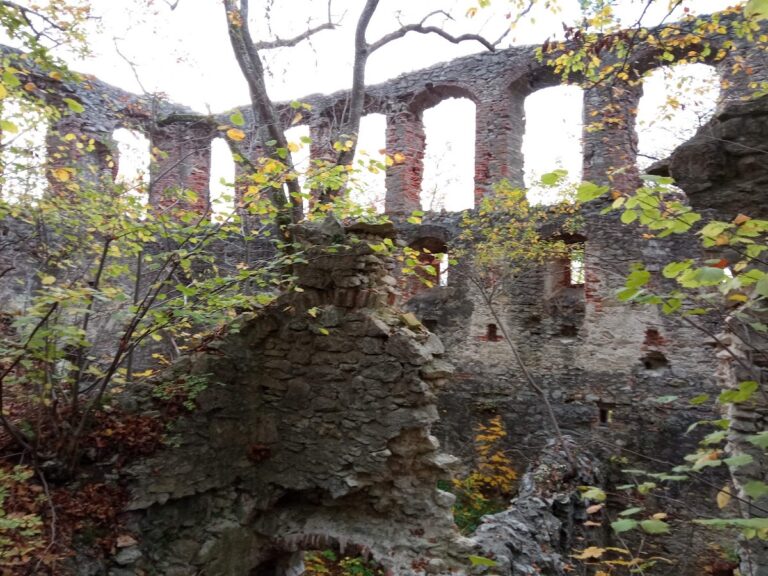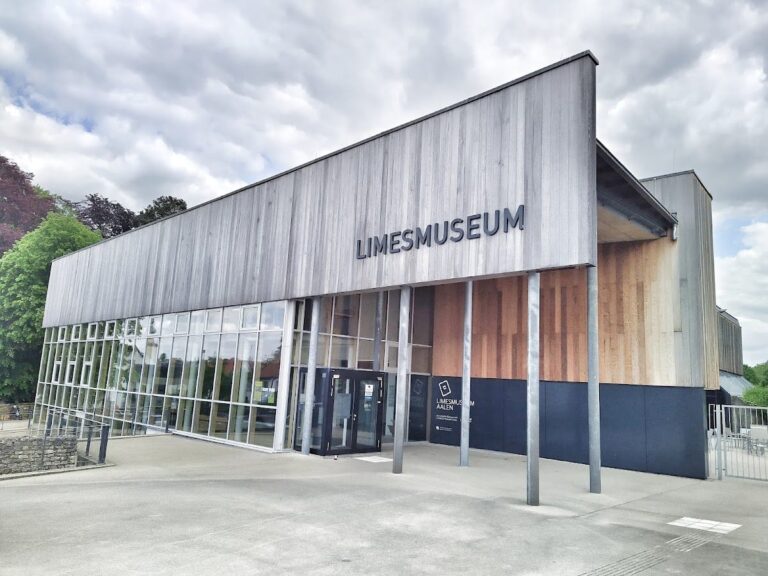Burg Schenkenstein: A Medieval Castle Ruin in Bopfingen, Germany
Visitor Information
Google Rating: 4.3
Popularity: Very Low
Google Maps: View on Google Maps
Official Website: geooo.me
Country: Germany
Civilization: Unclassified
Remains: Military
History
Burg Schenkenstein is a medieval castle ruin situated on a rocky spur above the Aufhausen district within the municipality of Bopfingen, Germany. Its origins trace back to the High Middle Ages, when it served as a stronghold built by the free noble family von Stein, who are first recorded through Konrad von Stein between 1138 and 1152.
In the early 13th century, around 1230, the von Stein family sold the castle to Bishop Hartmann von Dillingen of Augsburg, reflecting a common practice of noble families transferring lands to ecclesiastical authorities. However, by 1263, control of the fortress had reverted to the original owners. Shortly after, the castle passed into the hands of the Counts of Oettingen, an influential noble family in the region. The Oettingen counts appointed the Schenken von Ehringen as their vassals at the castle. This vassal family eventually took on the name Schenken von Stein, linking their identity with the castle and its surrounding lands.
In 1410, Georg Schenk von Stein formally permitted the imperial city of Nördlingen to access the castle in exchange for a payment of 200 florins, indicating the castle’s strategic and economic importance. However, the castle’s active use came to an abrupt end in 1525 during the upheavals of the German Peasants’ War, when peasant insurgents attacked and severely damaged the fortress. After this event, the castle was left in ruins and was abandoned as a residence.
The Schenken von Stein family lineage survived until its termination in 1902 with Max von Stein residing in South Tyrol. In the 20th century, specifically in 1931, the deteriorated castle ruin was donated by Prince Eugen von Oettingen-Wallerstein to the local municipality of Aufhausen, marking a change in stewardship from noble family ownership to community care.
Remains
The site of Burg Schenkenstein reveals a compact and well-positioned medieval fortress occupying the end of a rocky spur, roughly 100 meters long, on the Schlossberg hill. The core of the castle, or inner ward, has a roughly polygonal shape measuring about 30 by 38 meters. This area was once enclosed by a ring wall, of which only scattered fragments remain today, indicating the extent of the defensive enclosure.
Dominating the core castle is a round main tower known as a bergfried, standing approximately 16 meters high with an outside diameter near 8 meters. Inside, the bergfried features a square chamber measuring roughly 3 by 3 meters. Its entrance, set on the southwest side, is characterized by a round-arched doorway. The original stonework of the tower’s outer shell is notable for its dark, bossed masonry—a technique where stones are left with a rough surface facing outward—that survives particularly well on the northern and eastern sides. Later repairs used lighter-colored stones, with the upper third of the tower showing exposed infill masonry, illustrating phases of maintenance and reconstruction.
Adjacent to the bergfried on the south side stood the palas, or residential building, which was attached to the curtain wall. The outer wall of this structure still rises up to about four meters in height along a length of roughly seven meters. Part of the palas was uniquely integrated with the natural bedrock: a large rock block was horizontally worked to provide a flat surface below the structure. Only limited above-ground masonry remains can be found on this rock boundary, hinting at how the castle builders adapted their construction to the terrain.
Westward of the main castle lies a terrace area called a zwinger, which served as an outer ward or enclosed space between defensive walls. Behind the core castle is the so-called lower castle area, where terraced terrain, rubble piles, and fragments of walls mark the sites of former buildings. This suggests an extended complex with more than just the main tower and residential quarters, although the precise functions of these structures remain recorded only as ruins.
Below the castle itself, in the valley, lies a Jewish cemetery likely established in the 16th century. This burial ground contains 363 gravestones, with interments continuing until 1940. The site is locally known as the “Judenturm,” or Jewish tower, a name that connects the cemetery culturally and geographically to the castle ruins above. Further downstream in the same forested valley is a Christian cemetery, demonstrating that the area served as an important burial site for both communities. The whole valley, therefore, functions as a historic funerary landscape closely linked to the castle’s presence.










